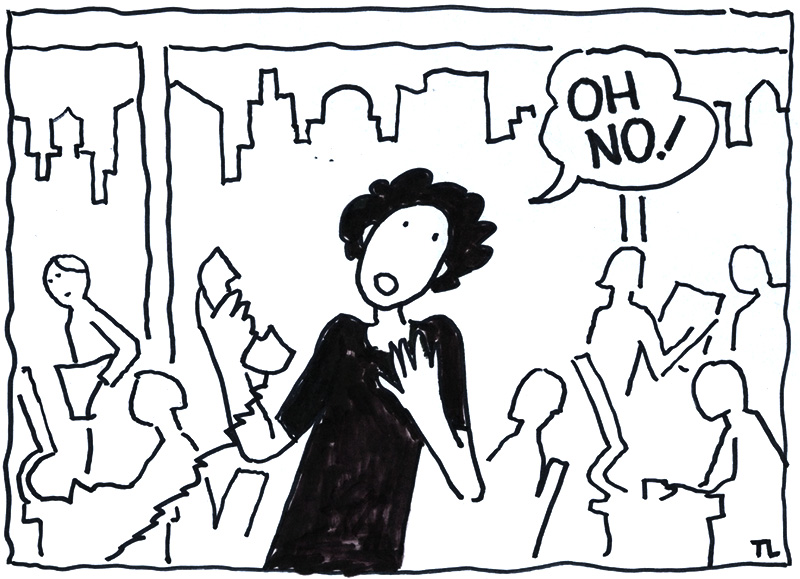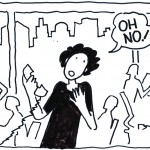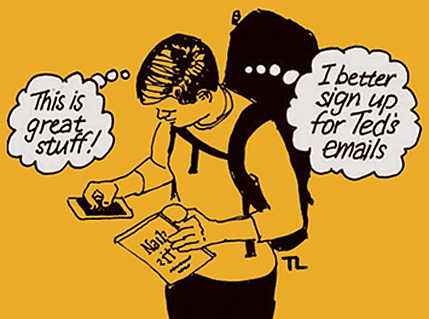Intuition, How Assumptions Can Lead Us Astray

As a designer, I’ve long prided myself on my intuition and ability to “read the writing on the wall.” As I’ve gained experience, and had opportunities to work with many designers who’ve grown their own firms, I’ve learned how common this belief in one’s own intuition is and how easily the assumptions that result can lead one astray.
Three examples:
My client, Mary, was sure that she’d won an international packaging assignment. Her firm’s experience was an exact match with the client’s need and she had developed a close relationship with two of the senior players on the client team. She knew they hadn’t said it, but it sure felt like the stars had aligned and she had the project in the bag.
They had said that they just needed budget approval to move ahead. So when they told her that their purchasing department required two competitive bids she went through the range of emotions; her hands got clammy, her chest tightened and she wanted to run out of the room. She didn’t know what to say. Fortunately, she didn’t say much and excused herself.
Another client, Harold, was sure that his long-term client was going to crowdsource the creative on a new brand they were launching. They’d hired a new brand manager to lead the brand creation effort and the word was: he was a fan of crowdsourcing. Harold hadn’t talked with the new manager; he’d just talked with his regular contact, the marketing assistant. Something he’d picked up from her gave him a queasy feeling that this wonderful client was about to go away. Harold didn’t even want to talk about it but after some coaching, he worked up the confidence to call the new manager.
Sharon called and said that her client (a long-term, close relationship) at corporate headquarters was practically begging her to respond to an RFP from a subsidiary company in the high-end snack business. The problem was she’d heard through the grapevine that the marketers at the subsidiary thought of Sharon as “un-strategic.” Worse, the RFP was, in Sharon’s view, stupid. Just great, you’re “un-strategic” and they’re “stupid.” Two very negative assumptions, one based on gossip, the other an angry reaction. What a great place to start.
In each example, the path forward involved using the original intuitions, and the resulting assumptions, as a source of insight into what questions should be asked. All three of my clients needed to discover if their concerns were valid and if there was an opportunity worth pursuing. Together we scoped out a few questions.
After she’d thought a bit, and talked with her team about the situation, Mary asked:
“I understood that my firm’s experience in Europe with this category was in line with your new packaging needs. Is that true?”
“Did you think the process, deliverables and costs we scoped in our engagement description were appropriate?”
“Help me to understand what has changed?”
Mary discovered that, yes, purchasing was involved because of the size of the budget. That, yes, two competitors were being consulted. But, she still had a significant advantage because her expertise was a perfect match. They also said that her budget seemed appropriate, but that there was a company-wide effort to control costs and that’s why purchasing was involved.
Harold discovered that the new marketing manager was a real fan of his firm’s work. Harold asked:
“Why are you using crowdsourcing on this new brand?”
The new client said that he’d found that getting a wide range of solutions quickly and cheaply gave him insights into the creative possibilities. Then he asked Harold to help him develop the criteria for the effort and to critique the results of the crowdsourcing.
After asking for various clarifications of the assignment as described in the RFP. Sharon explained:
“We’re not going to respond to your RFP because we believe there is another way forward that offers more opportunity to grow the brand.”
Sharon did fly out and make a presentation to the snack food subsidiary and presented a plan that was three times the budget in the client’s RFP. Still she won the assignment.
Harold’s client went ahead with the crowdsourcing, but they gave Harold a respectable budget to do the creative and to participate in the critique of the crowdsourced effort. Everyone won; even the crowd folks were paid small fees.
Mary made a series of presentations to her contacts and to procurement. She even got the opportunity to meet the CMO and CEO. She was questioned closely on every aspect of her proposal by purchasing. She did adjust her plan, not to lower the costs, but to more precisely meet her client’s needs.
Sharon, Harold, and Mary each challenged their assumptions and used their intuition to get more information for their negotiations. As a result, each learned more about their client’s needs, and came out far ahead of any other competition.
This article originally appeared on GraphicDesign.com.


